List of presidents of Bolivia: Difference between revisions
No edit summary |
|||
| Line 14: | Line 14: | ||
The following table contains a list of the individuals who have served as President of Bolivia. |
The following table contains a list of the individuals who have served as President of Bolivia. |
||
==United Provinces of the Rio de la Plata (1810–1831)== |
|||
===Junta presidents (1810–1811)=== |
|||
{| class="wikitable" width="100%" style="text-align: center;" |
|||
!rowspan=2 width="10%"|Portrait |
|||
!rowspan=2 width="25%"|Name<br />{{small|(Birth–Death)}} |
|||
!colspan=2 width="31.4%"|Term of office |
|||
!rowspan=2 width="26%"|Notes<br /> |
|||
!rowspan=2 width="1%"|{{tooltip|R.|References}} |
|||
|- |
|||
!Start |
|||
!End |
|||
|- |
|||
| rowspan=2| [[File:Saavedra 2.jpg|100px]] |
|||
| rowspan=2| [[Cornelio Saavedra]]<br />{{small|(1759–1829)}} |
|||
| 25 May 1810 |
|||
| 18 December 1810 |
|||
| align=left| President of the [[Primera Junta]], at the beginning of the [[Argentine War of Independence]]. He is regarded as the first president of a national government.<ref>"Buenos Aires, diciembre 16 de 1829.- El primer comandante de Patricios, el primer presidente de un gobierno patrio, pudo sólo quedar olvidado en su fallecimiento por las circunstancias calamitosas en que el país se hallaba. Después que ellas han terminado, sería una ingratitud negar a ciudadano tan eminente el tributo de honor rendido a su mérito, y a una vida ilustrada con tantas virtudes, que supo consagrar entera al servicio de su patria. El gobierno, para cumplir un deber tan sagrado, acuerda y decreta: Artículo 1º: En el [[La Recoleta Cemetery|cementerio del Norte]] se levantará, por cuenta del gobierno, un monumento en que se depositarán los restos del brigadier general D. Cornelio Saavedra. Artículo 2º: Se archivará en la Biblioteca Pública un manuscrito autógrafo del mismo brigadier general, con arreglo a lo que previene el decreto de 6 de octubre de 1821. Artículo 3º: Comuníquese y publíquese. Rosas – Tomás Guido".</ref> |
|||
| rowspan=2|<ref>Rosa, vol. II, p.199-306</ref> |
|||
|- |
|||
| 18 December 1810 |
|||
| 26 August 1811 |
|||
| align=left| President of the [[Junta Grande]]. Left to serve in the [[Army of the North]]. |
|||
|- |
|||
| [[File:Matheu.jpg|100px]] |
|||
| [[Domingo Matheu]]<br />{{small|(1765–1831)}} |
|||
| 26 August 1811 |
|||
| 23 September 1811 |
|||
| align=left| President of the Junta Grande, from Saavedra's departure to the dissolution of it. |
|||
| <ref>Rosa, vol. II, p. 306-319</ref> |
|||
|} |
|||
===Triumvirates (1811–1814)=== |
|||
{| width=100% class="wikitable" |
|||
|- |
|||
! colspan=4| <big>[[First Triumvirate (Argentina)|First Triumvirate]]</big><br />23 September 1811 – 8 October 1812 |
|||
|- |
|||
! 23 September 1811 – 23 March 1812 |
|||
! 23 March 1812 – 8 October 1812 |
|||
|- |
|||
| colspan=2 style="vertical-align: top;" align="middle" | [[File:FelicianoChiclana.jpg|middle|100px]]<br />[[Feliciano Chiclana]]<br />{{small|(1761–1826)}} |
|||
|- |
|||
| colspan=2 style="vertical-align: top;" align="middle" | [[File:Manuel de Sarratea.jpg|middle|100px]]<br />[[Manuel de Sarratea]]<br />{{small|(1774–1849)}} |
|||
|- |
|||
| style="vertical-align: top;" align="middle" | [[File:Juanjpaso.jpg|middle|100px]]<br />[[Juan José Paso]]<br />{{small|(1758–1833)}} |
|||
| style="vertical-align: top;" align="middle" | [[File:Juan Martin de Pueyrredon por Villar.jpg|middle|100px]]<br />[[Juan Martín de Pueyrredón]]<br />{{small|(1776–1850)}} |
|||
|} |
|||
{| width=100% class="wikitable" |
|||
|- |
|||
! colspan=4| <big>[[Second Triumvirate (Argentina)|Second Triumvirate]]</big><br />8 October 1812 – 31 January 1814 |
|||
|- |
|||
! 8 October 1812 – 20 February 1813 |
|||
! 20 February 1813 – 19 August 1813 |
|||
! 19 August 1813 – 5 November 1813 |
|||
! 5 November 1813 – 31 January 1814 |
|||
|- |
|||
| colspan=4 style="vertical-align: top;" align="middle" | [[File:NRodriguez.jpg|middle|100px]]<br />[[Nicolás Rodríguez Peña]]<br />{{small|(1775–1853)}} |
|||
|- |
|||
| colspan=2 style="vertical-align: top;" align="middle" | [[File:AntonioAlvarezJonte.jpg|middle|100px]]<br />[[Antonio Álvarez Jonte]]<br />{{small|(1784–1820)}} |
|||
| colspan=2 style="vertical-align: top;" align="middle" | [[File:Posadas.jpg|middle|100px]]<br />[[Gervasio Antonio de Posadas]]<br />{{small|(1757–1833)}} |
|||
|- |
|||
| style="vertical-align: top;" align="middle" | [[File:Juanjpaso.jpg|middle|100px]]<br />[[Juan José Paso]]<br />{{small|(1758–1833)}} |
|||
| colspan=2 style="vertical-align: top;" align="middle" | [[José Julián Pérez]]<br />{{small|(1770–1840)}} |
|||
| style="vertical-align: top;" align="middle" | [[File:Juan Larrea.jpg|middle|100px]]<br />[[Juan Larrea (politician)|Juan Larrea]]<br />{{small|(1782–1847)}} |
|||
|} |
|||
===Supreme Directors (1814–1820)=== |
|||
{{main|Supreme Director of the United Provinces of the Río de la Plata}} |
|||
{| class="wikitable" width="100%" style="text-align: center;" |
|||
!rowspan=2 width="10%"|Portrait |
|||
!rowspan=2 width="25%"|Name<br />{{small|(Birth–Death)}} |
|||
!colspan=2 width="31.4%"|Term of office |
|||
!rowspan=2 width="26%"|Notes<br /> |
|||
!rowspan=2 width="1%"|{{tooltip|R.|References}} |
|||
|- |
|||
!Start |
|||
!End |
|||
|- |
|||
| [[File:Posadas.jpg|100px]] |
|||
| [[Gervasio Antonio de Posadas]]<br />{{small|(1757–1833)}} |
|||
| 31 January 1814 |
|||
| 9 January 1815 |
|||
| align=left| Chosen by the ''[[Asamblea del Año XIII|Assembly of the Year 1813]]''. |
|||
| <ref>Rosa, Vol. III, p. 75-114</ref> |
|||
|- |
|||
| [[File:CarlosAlvearcolor.jpg|100px]] |
|||
| [[Carlos María de Alvear]]<br />{{small|(1789–1852)}} |
|||
| 9 January 1815 |
|||
| 18 April 1815 |
|||
| align=left| Forced to resign by a mutiny. |
|||
| <ref>Rosa, vol. III, p. 114-129</ref> |
|||
|- |
|||
| [[File:Retrato más canónico de José de San Martín.jpg|100px]]<br />[[File:Matiasdeirigoyen.jpg|100px]]<br />[[File:Manuel de Sarratea.jpg|100px]] |
|||
| [[José de San Martín]]<br />{{small|(1778–1850)}}<br /><br />[[Matías de Irigoyen]]<br />{{small|(1781–1839)}}<br /><br />[[Manuel de Sarratea]]<br />{{small|(1774–1849)}} |
|||
| 18 April 1815 |
|||
| 20 April 1815 |
|||
| align=left| Third Triumvirate. Interim government until the appointment of a new Supreme Director. |
|||
| |
|||
|- |
|||
| [[File:Jose Rondeau.jpg|100px]] |
|||
| [[José Rondeau]]<br />{{small|(1773–1844)}} |
|||
| 20 April 1815 |
|||
| 21 April 1815 |
|||
| align=left| Appointed successor of Alvear, could not take office because he was in command of the [[Army of the North]] |
|||
| <ref>Rosa, vol. III, p. 143</ref> |
|||
|- |
|||
| [[File:Alvarez thomas.jpg|100px]] |
|||
| [[Ignacio Álvarez Thomas]]<br />{{small|(1787–1857)}} |
|||
| 21 April 1815 |
|||
| 16 April 1816 |
|||
| align=left| ''Acting'', for Rondeau. Convened the [[Congress of Tucumán]], that would declare Independence. |
|||
| <ref>Rosa, vol. III, p. 143-160</ref> |
|||
|- |
|||
| [[File:Antonio Gonzalez Balcarce.jpg|100px]] |
|||
| [[Antonio González de Balcarce]]<br />{{small|(1774–1819)}} |
|||
| 16 April 1816 |
|||
| 9 July 1816 |
|||
| align=left| Interim. |
|||
| <ref>Rosa, vol. III, p. 160</ref> |
|||
|- |
|||
| [[File:Juan Martin de Pueyrredon por Villar.jpg|100px]] |
|||
| [[Juan Martín de Pueyrredón]]<br />{{small|(1776–1850)}} |
|||
| 9 July 1816 |
|||
| 9 June 1819 |
|||
| align=left| First Argentine Head of State after the [[Argentine Declaration of Independence]]. Supported the [[Crossing of the Andes]]. |
|||
| <ref>Rosa, vol. III, p. 161-242</ref> |
|||
|- |
|||
| [[File:Jose Rondeau.jpg|100px]] |
|||
| [[José Rondeau]]<br />{{small|(1773–1844)}} |
|||
| 9 June 1819 |
|||
| 1 February 1820 |
|||
| align=left| Decisively defeated at the [[Battle of Cepeda (1820)|Battle of Cepeda]] by Federalist forces opposed to the [[Argentine Constitution of 1819|1819 centralist Constitution]]. |
|||
| <ref>Rosa, vol. III, p. 242-253</ref> |
|||
|- |
|||
| [[File:Juan Pedro Aguirre.jpg|100px]] |
|||
| [[Juan Pedro Aguirre]]<br />{{small|(1781–1837)}} |
|||
| 1 February 1820 |
|||
| 11 February 1820 |
|||
| align=left| Interim. Dissolved the National Congress and endorsed the Buenos Aires Cabildo to choose a Governor for Buenos Aires Province instead of the previous post of Governor Mayor. |
|||
| |
|||
|} |
|||
=== Governors of Buenos Aires Province managing international relations (1820–1826) === |
|||
Between 1820 and 1826, the United Provinces functioned as a loose alliance of autonomous provinces put together by pacts and treaties (see [[Treaty of Pilar]], [[Treaty of Benegas]], [[Quadrilateral Treaty]]), but lacking any actual central government until the 1825 Constitutional Congress. |
|||
{| class="wikitable" width="100%" style="text-align: center;" |
|||
!rowspan=2 width="10%"|Portrait |
|||
!rowspan=2 width="25%"|Name<br />{{small|(Birth–Death)}} |
|||
!colspan=2 width="31.4%"|Term of office |
|||
!rowspan=2 width="26%"|Notes<br /> |
|||
!rowspan=2 width="1%"|{{tooltip|R.|References}} |
|||
|- |
|||
!Start |
|||
!End |
|||
|- |
|||
| [[File:Matiasdeirigoyen.jpg|100px]] |
|||
| [[Matías de Irigoyen]]<br />{{small|(1781–1839)}} |
|||
| 11 February 1820 |
|||
| 18 February 1820 |
|||
| align=left| He had been Governor Mayor from 9 to 11 February 1820 and was promoted interim as Governor until the appointment of Manuel de Sarratea. |
|||
| |
|||
|- |
|||
| [[File:Sarratea.gif|100px]] |
|||
| [[Manuel de Sarratea]]<br />{{small|(1774–1849)}} |
|||
| 18 February 1820 |
|||
| 6 March 1820 |
|||
| align=left| The political crisis that existed in the country led to his government lacked support from both Buenos Aires and the other provinces. Thus he resigned shortly afterwards. |
|||
| |
|||
|- |
|||
| [[File:JuanRamonGonzalezBalcarce.gif|100px]] |
|||
| [[Juan Ramón Balcarce]]<br />{{small|(1773–1836)}} |
|||
| 6 March 1820 |
|||
| 11 March 1820 |
|||
| align=left| Interim. Resigned. |
|||
| |
|||
|- |
|||
| [[File:Sarratea.gif|100px]] |
|||
| [[Manuel de Sarratea]]<br />{{small|(1774–1849)}} |
|||
| 11 March 1820 |
|||
| 2 May 1820 |
|||
| align=left| He returned to office after the end of the brief government of Balcarce. The circumstances did not improve and ended up resigning a second time. |
|||
| |
|||
|- |
|||
| [[File:Iramosmexia.jpg|100px]] |
|||
| [[Ildefonso Ramos Mexía]]<br />{{small|(1769–1854)}} |
|||
| 2 May 1820 |
|||
| 20 June 1820 |
|||
| align=left| |
|||
| |
|||
|- |
|||
| [[File:Cabildo-Buenos-Aires.jpg|100px]] |
|||
| [[Ildefonso Ramos Mexía]] and [[Miguel Estanislao Soler]] |
|||
| 20 June 1820 |
|||
| 23 June 1820 |
|||
| align=left| They took power simultaneously. |
|||
| |
|||
|- |
|||
| [[File:M E Soler por Bettinoti.jpg|100px]] |
|||
| [[Miguel Estanislao Soler]]<br />{{small|(1783–1849)}} |
|||
| 23 June 1820 |
|||
| 29 June 1820 |
|||
| align=left| He assumed de facto, after an armed uprising, but his government lasted a few days, when the Board of Representatives appointed Manuel Dorrego. |
|||
| |
|||
|- |
|||
| [[File:Manuel Dorrego.jpg|100px]] |
|||
| [[Manuel Dorrego]]<br />{{small|(1787–1828)}} |
|||
| 29 June 1820 |
|||
| 20 September 1820 |
|||
| align=left| Interim. |
|||
| |
|||
|- |
|||
| [[File:Martín Rodríguez 2.JPG|100px]] |
|||
| [[Martín Rodríguez (politician)|Martín Rodríguez]]<br />{{small|(1771–1845)}} |
|||
| 20 September 1820 |
|||
| 2 April 1824 |
|||
| align=left| He signed the Treaty of Benegas and the Quadrilateral. |
|||
| |
|||
|- |
|||
| [[File:General Juan Gregorio Las Heras.jpg|100px]] |
|||
| [[Juan Gregorio de las Heras]]<br />{{small|(1780–1866)}} |
|||
| 2 April 1824 |
|||
| 7 February 1826 |
|||
| align=left| He called a Constituent Congress that enacted several laws for which the Unitary Republic was proclaimed. He resigned because of that republic. |
|||
| |
|||
|} |
|||
=== First presidential government (1826–1827)=== |
|||
{| class="wikitable" width="100%" style="text-align: center;" |
|||
!rowspan=2 width="1%"| |
|||
!rowspan=2 width="10%"|Portrait |
|||
!rowspan=2 width="25%"|Name<br />{{small|(Birth–Death)}} |
|||
!colspan=2 width="31.4%"|Term of office |
|||
!rowspan=2 | Political<br />party |
|||
!rowspan=2 width="26%"|Notes<br /> |
|||
!rowspan=2 width="1%"|{{tooltip|R.|References}} |
|||
|- |
|||
!Start |
|||
!End |
|||
|- |
|||
| bgcolor=Lightblue| |
|||
| [[File:Bernardino Rivadavia 2.jpg|100px]] |
|||
| [[Bernardino Rivadavia]]<br />{{small|(1780–1845)}} |
|||
| 8 February 1826 |
|||
| 27 June 1827 |
|||
| [[Unitarian Party|Unitarian]] |
|||
| align=left| Elected by the Constituent Assembly of 1826, before the promulgation of the [[Argentine Constitution of 1826|1826 constitution]].<ref name="Rivadavia"/> Waged the [[Cisplatine War]]. Resigned as the Constitution was rejected by the provinces and the outcome of the war generated popular discontent. |
|||
| <ref name="Rivadavia" />{{rp|23–32}} |
|||
|- |
|||
| bgcolor=Lightgrey| |
|||
| [[File:Vicente Lopez 1860.jpg|100px]] |
|||
| [[Vicente López y Planes]]<br />{{small|(1785–1856)}} |
|||
| 7 July 1827 |
|||
| 18 August 1827 |
|||
| — |
|||
| align=left| Elected as interim president by the Constituent Assembly of 1826. His mandate was limited to close the Assembly and call for elections for a new governor of Buenos Aires. |
|||
| <ref name="Rivadavia"/> |
|||
|} |
|||
=== Governors of Buenos Aires Province managing international relations (1827–1831) === |
|||
{| class="wikitable" width="100%" style="text-align: center;" |
|||
!rowspan=2 width="1%"| |
|||
!rowspan=2 width="10%"|Portrait |
|||
!rowspan=2 width="25%"|Name<br />{{small|(Birth–Death)}} |
|||
!colspan=2 width="31.4%"|Term of office |
|||
!rowspan=2 | Political<br />party |
|||
!rowspan=2 width="26%"|Notes<br /> |
|||
!rowspan=2 width="1%"|{{tooltip|R.|References}} |
|||
|- |
|||
!Start |
|||
!End |
|||
|- |
|||
| bgcolor=#B31B1B| |
|||
| [[File:Dorrego a color.jpg|100px]] |
|||
| [[Manuel Dorrego]]<br />{{small|(1787–1828)}} |
|||
| 18 August 1827 |
|||
| 1 December 1828 |
|||
| [[Federales (Argentina)|Federal]] |
|||
| align=left| [[1828 Treaty of Montevideo|Ended]] the [[Cisplatine War]]. Deposed and executed by [[Juan Lavalle]]. |
|||
| <ref>Rosa, vol. V, p.73-97</ref> |
|||
|- |
|||
| bgcolor=Lightblue| |
|||
| [[File:Lavalle.jpg|100px]] |
|||
| [[Juan Lavalle]]<br />{{small|(1797–1841)}} |
|||
| 1 December 1828 |
|||
| 26 June 1829 |
|||
| [[Unitarian Party|Unitarian]] |
|||
| align=left| Coup d'état. [[Battle of Márquez Bridge|Defeated in battle]], [[Cañuelas Pact|resigned]] under siege |
|||
| <ref>Rosa, vol. IV, p.97-117</ref> |
|||
|- |
|||
| bgcolor=#B31B1B| |
|||
| [[File:Viamonte.jpg|100px]] |
|||
| [[Juan José Viamonte]]<br />{{small|(1774–1843)}} |
|||
| 26 June 1829 |
|||
| 6 December 1829 |
|||
| [[Federales (Argentina)|Federal]] |
|||
| align=left| Interim. |
|||
| <ref>Rosa, vol. IV, p 127-129</ref> |
|||
|- |
|||
| bgcolor=#B31B1B| |
|||
| [[File:Juan Manuel de Rosas.jpg|100px]] |
|||
| [[Juan Manuel de Rosas]]<br />{{small|(1793–1877)}} |
|||
| 6 December 1829 |
|||
| 4 January 1831 |
|||
| [[Federales (Argentina)|Federal]] |
|||
| align=left| First term. Convened the [[Pacto Federal|Federal Pact]] and waged war against the [[Unitarian League]]. |
|||
| <ref name="Rosa, vol. IV, p. 129-171">Rosa, vol. IV, p. 129-171</ref> |
|||
|} |
|||
==List of Presidents of Bolivia== |
==List of Presidents of Bolivia== |
||
Revision as of 02:16, 24 April 2020
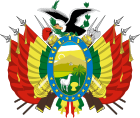 |
|---|
|
|
This article contains a list of presidents of Bolivia, from the Declaration of Independence after the conclusion of the War of Independence (1825) to the present day.
Background
The origins of Bolivia are trackables to Chuquisaca Revolution of 1809 in Upper Peru,[1] followed by La Paz revolution within the same year, which was part of the Latin American wars of independence against Spanish colonial governments. Despite other struggles for independence, the insurgents immediately formed a constitutional government who rejected any oath or compromise with Spain. The rebel government also integrated all parts of population, including mestizos and indigenous. However, by the early 1810, the rebels were defeated, with their leaders executed or hunted down, leaving the neighboring countries of Peru and Argentina to fight for the controls of the Upper Peru areas.[2]
In early 1825, General Antonio José de Sucre led his army to Upper Peru after his triumph in the Battle of Ayacucho on 9 December 1824, which ended the Spanish rule over Peru, entering La Paz on 9 February 1825. After his arrival, he issued a decree considered the milestone of Bolivian independence, calling a "General Assembly of Deputies of Upper Peru" in the town of Oruro (then moved to Chuquisaca, present-day Sucre) to clarify the political status of the province.[3] On 6 August 1825, the representatives voted for three alternatives: annexation to Peru, annexation to Argentina or full independence and establishment of a republican state.[4] The large majority of deputies opted for independence, and Upper Peru was declared a country in the same day. The General Simón Bolívar was deeply popular in the region, and was immediately elected by the General Assembly as President. To honor who was considered one of the great libertadores, the delegates chose to name Upper Peru as "Republic of Bolívar", changing it into Bolivia in 3 October 1825, echoing the delegate Manuel Martín Cruz who stated "If to Romulus, Rome; to Bolívar, Bolivia" (Si de Rómulo, Roma; de Bolívar, Bolivia).[5]
History
During its more than 192 years of independence, Bolivia has been ruled by the military leaders who fought for independence, the leaders of the War of the Pacific, representatives of the aristocracy, and democratically elected leaders. Also, the history of the presidency has involved civil wars, more than 190 coups and violence.
Different titles have been used, such as "Liberator of Bolivia" (used by Simón Bolívar and Antonio José de Sucre), and "Supreme Protector" (by Andrés de Santa Cruz).
The following table contains a list of the individuals who have served as President of Bolivia.
United Provinces of the Rio de la Plata (1810–1831)
Junta presidents (1810–1811)
| Portrait | Name (Birth–Death) |
Term of office | Notes |
R. | |
|---|---|---|---|---|---|
| Start | End | ||||
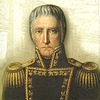
|
Cornelio Saavedra (1759–1829) |
25 May 1810 | 18 December 1810 | President of the Primera Junta, at the beginning of the Argentine War of Independence. He is regarded as the first president of a national government.[6] | [7] |
| 18 December 1810 | 26 August 1811 | President of the Junta Grande. Left to serve in the Army of the North. | |||
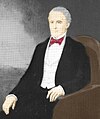
|
Domingo Matheu (1765–1831) |
26 August 1811 | 23 September 1811 | President of the Junta Grande, from Saavedra's departure to the dissolution of it. | [8] |
Triumvirates (1811–1814)
| First Triumvirate 23 September 1811 – 8 October 1812 | |||
|---|---|---|---|
| 23 September 1811 – 23 March 1812 | 23 March 1812 – 8 October 1812 | ||
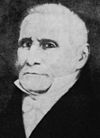 Feliciano Chiclana (1761–1826) | |||
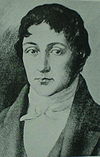 Manuel de Sarratea (1774–1849) | |||
 Juan José Paso (1758–1833) |
 Juan Martín de Pueyrredón (1776–1850) | ||
| Second Triumvirate 8 October 1812 – 31 January 1814 | |||
|---|---|---|---|
| 8 October 1812 – 20 February 1813 | 20 February 1813 – 19 August 1813 | 19 August 1813 – 5 November 1813 | 5 November 1813 – 31 January 1814 |
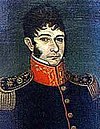 Nicolás Rodríguez Peña (1775–1853) | |||
 Antonio Álvarez Jonte (1784–1820) |
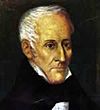 Gervasio Antonio de Posadas (1757–1833) | ||
 Juan José Paso (1758–1833) |
José Julián Pérez (1770–1840) |
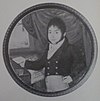 Juan Larrea (1782–1847) | |
Supreme Directors (1814–1820)
| Portrait | Name (Birth–Death) |
Term of office | Notes |
R. | |
|---|---|---|---|---|---|
| Start | End | ||||

|
Gervasio Antonio de Posadas (1757–1833) |
31 January 1814 | 9 January 1815 | Chosen by the Assembly of the Year 1813. | [9] |

|
Carlos María de Alvear (1789–1852) |
9 January 1815 | 18 April 1815 | Forced to resign by a mutiny. | [10] |
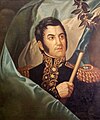  
|
José de San Martín (1778–1850) Matías de Irigoyen (1781–1839) Manuel de Sarratea (1774–1849) |
18 April 1815 | 20 April 1815 | Third Triumvirate. Interim government until the appointment of a new Supreme Director. | |

|
José Rondeau (1773–1844) |
20 April 1815 | 21 April 1815 | Appointed successor of Alvear, could not take office because he was in command of the Army of the North | [11] |

|
Ignacio Álvarez Thomas (1787–1857) |
21 April 1815 | 16 April 1816 | Acting, for Rondeau. Convened the Congress of Tucumán, that would declare Independence. | [12] |
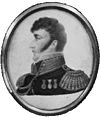
|
Antonio González de Balcarce (1774–1819) |
16 April 1816 | 9 July 1816 | Interim. | [13] |

|
Juan Martín de Pueyrredón (1776–1850) |
9 July 1816 | 9 June 1819 | First Argentine Head of State after the Argentine Declaration of Independence. Supported the Crossing of the Andes. | [14] |

|
José Rondeau (1773–1844) |
9 June 1819 | 1 February 1820 | Decisively defeated at the Battle of Cepeda by Federalist forces opposed to the 1819 centralist Constitution. | [15] |
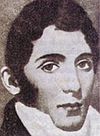
|
Juan Pedro Aguirre (1781–1837) |
1 February 1820 | 11 February 1820 | Interim. Dissolved the National Congress and endorsed the Buenos Aires Cabildo to choose a Governor for Buenos Aires Province instead of the previous post of Governor Mayor. | |
Governors of Buenos Aires Province managing international relations (1820–1826)
Between 1820 and 1826, the United Provinces functioned as a loose alliance of autonomous provinces put together by pacts and treaties (see Treaty of Pilar, Treaty of Benegas, Quadrilateral Treaty), but lacking any actual central government until the 1825 Constitutional Congress.
| Portrait | Name (Birth–Death) |
Term of office | Notes |
R. | |
|---|---|---|---|---|---|
| Start | End | ||||

|
Matías de Irigoyen (1781–1839) |
11 February 1820 | 18 February 1820 | He had been Governor Mayor from 9 to 11 February 1820 and was promoted interim as Governor until the appointment of Manuel de Sarratea. | |
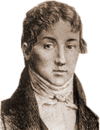
|
Manuel de Sarratea (1774–1849) |
18 February 1820 | 6 March 1820 | The political crisis that existed in the country led to his government lacked support from both Buenos Aires and the other provinces. Thus he resigned shortly afterwards. | |

|
Juan Ramón Balcarce (1773–1836) |
6 March 1820 | 11 March 1820 | Interim. Resigned. | |

|
Manuel de Sarratea (1774–1849) |
11 March 1820 | 2 May 1820 | He returned to office after the end of the brief government of Balcarce. The circumstances did not improve and ended up resigning a second time. | |

|
Ildefonso Ramos Mexía (1769–1854) |
2 May 1820 | 20 June 1820 | ||

|
Ildefonso Ramos Mexía and Miguel Estanislao Soler | 20 June 1820 | 23 June 1820 | They took power simultaneously. | |
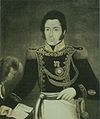
|
Miguel Estanislao Soler (1783–1849) |
23 June 1820 | 29 June 1820 | He assumed de facto, after an armed uprising, but his government lasted a few days, when the Board of Representatives appointed Manuel Dorrego. | |
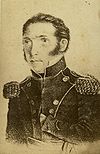
|
Manuel Dorrego (1787–1828) |
29 June 1820 | 20 September 1820 | Interim. | |

|
Martín Rodríguez (1771–1845) |
20 September 1820 | 2 April 1824 | He signed the Treaty of Benegas and the Quadrilateral. | |
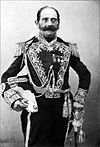
|
Juan Gregorio de las Heras (1780–1866) |
2 April 1824 | 7 February 1826 | He called a Constituent Congress that enacted several laws for which the Unitary Republic was proclaimed. He resigned because of that republic. | |
First presidential government (1826–1827)
| Portrait | Name (Birth–Death) |
Term of office | Political party |
Notes |
R. | ||
|---|---|---|---|---|---|---|---|
| Start | End | ||||||

|
Bernardino Rivadavia (1780–1845) |
8 February 1826 | 27 June 1827 | Unitarian | Elected by the Constituent Assembly of 1826, before the promulgation of the 1826 constitution.[16] Waged the Cisplatine War. Resigned as the Constitution was rejected by the provinces and the outcome of the war generated popular discontent. | [16]: 23–32 | |
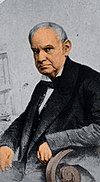
|
Vicente López y Planes (1785–1856) |
7 July 1827 | 18 August 1827 | — | Elected as interim president by the Constituent Assembly of 1826. His mandate was limited to close the Assembly and call for elections for a new governor of Buenos Aires. | [16] | |
Governors of Buenos Aires Province managing international relations (1827–1831)
| Portrait | Name (Birth–Death) |
Term of office | Political party |
Notes |
R. | ||
|---|---|---|---|---|---|---|---|
| Start | End | ||||||
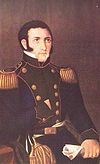
|
Manuel Dorrego (1787–1828) |
18 August 1827 | 1 December 1828 | Federal | Ended the Cisplatine War. Deposed and executed by Juan Lavalle. | [17] | |
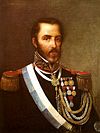
|
Juan Lavalle (1797–1841) |
1 December 1828 | 26 June 1829 | Unitarian | Coup d'état. Defeated in battle, resigned under siege | [18] | |
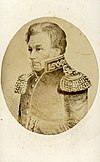
|
Juan José Viamonte (1774–1843) |
26 June 1829 | 6 December 1829 | Federal | Interim. | [19] | |
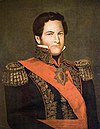
|
Juan Manuel de Rosas (1793–1877) |
6 December 1829 | 4 January 1831 | Federal | First term. Convened the Federal Pact and waged war against the Unitarian League. | [20] | |
List of Presidents of Bolivia
| N | Picture | Name (Birth–Death) |
Term of office | Party | Title(s) | |
|---|---|---|---|---|---|---|
| style="background:Template:Independent (politician)/meta/color; color:black" |1 | 
|
Simón Bolívar (1783–1830) |
11 August 1825 | 29 December 1825 | Independent | Liberator of Bolivia |
| style="background:Template:Independent (politician)/meta/color; color:black" |2 | 
|
Antonio José de Sucre (1795–1830) |
29 December 1825 | 18 April 1828 | Independent | Liberator of Bolivia (29 December 1825 – 19 June 1826) President (19 June 1826 – 18 April 1828) |
| style="background:Template:Independent (politician)/meta/color; color:black" |3 | 
|
José María Pérez de Urdininea (1784–1865) |
18 April 1828 | 2 August 1828 | Independent | President |
| style="background:Template:Independent (politician)/meta/color; color:black" |4 | 
|
José Miguel de Velasco Franco (1795–1859) |
2 August 1828 | 18 December 1828 | Independent | Acting President |
| style="background:Template:Independent (politician)/meta/color; color:black" |5 | 
|
Pedro Blanco Soto (1795–1829) |
18 December 1828 | 1 January 1829 | Independent | Provisional President |
| style="background:Template:Independent (politician)/meta/color; color:black" |4 | 
|
José Miguel de Velasco Franco (1795–1859) |
1 January 1829 | 24 May 1829 | Independent | Acting President |
| style="background:Template:Independent (politician)/meta/color; color:black" |6 | 
|
Andrés de Santa Cruz (1792–1865) |
24 May 1829 | 20 February 1839 | Independent | Provisional President (29 May 1829 – 15 August 1831) President (15 August 1831 – 20 February 1839) Supreme Protector of the Peru–Bolivian Confederation (28 October 1836 – 20 February 1839) |
| style="background:Template:Independent (politician)/meta/color; color:black" |4 | 
|
José Miguel de Velasco Franco (1795–1859) |
20 February 1839 | 10 June 1841 | Independent | Provisional Supreme Chief (20 February 1839 – 16 June 1839) Provisional President (16 June 1839 – 15 August 1840) President (15 August 1840 – 10 June 1841) |
| style="background:Template:Independent (politician)/meta/color; color:black" |7 | 
|
Sebastián Ágreda (1795–1875) |
10 June 1841 | 9 July 1841 | Independent | Provisional Chief |
| style="background:Template:Independent (politician)/meta/color; color:black" |8 | 
|
Mariano Calvo (1782–1842) |
9 July 1841 | 22 September 1841 | Independent | Acting President |
| style="background:Template:Independent (politician)/meta/color; color:black" |9 | 
|
José Ballivián (1805–1852) |
22 September 1841 | 23 December 1847 | Independent | Provisional President (22 September 1841 – 15 August 1844) President (15 August 1844 – 23 December 1847) |
| style="background:Template:Independent (politician)/meta/color; color:black" |10 | 
|
Eusebio Guilarte Vera (1805–1849) |
23 December 1847 | 2 January 1848 | Independent | Interim President |
| style="background:Template:Independent (politician)/meta/color; color:black" |4 | 
|
José Miguel de Velasco Franco (1795–1859) |
18 January 1848 | 6 December 1848 | Independent | Provisional President |
| style="background:Template:Independent (politician)/meta/color; color:black" |11 | 
|
Manuel Isidoro Belzu (1808–1865) |
6 December 1848 | 15 August 1855 | Independent | Provisional President (6 December 1848 – 15 August 1850) President (15 August 1850 – 15 August 1855) |
| style="background:Template:Independent (politician)/meta/color; color:black" |12 | 
|
Jorge Córdova (1822–1861) |
15 August 1855 | 21 October 1857 | Independent | President |
| style="background:Template:Independent (politician)/meta/color; color:black" |13 | 
|
José María Linares (1808–1861) |
21 October 1857 | 14 January 1861 | Independent | Provisional President (21 October 1857 – 1858) Dictator for Life (1858 – 14 January 1861) |
| style="background:Template:Independent (politician)/meta/color; color:black" |14 | 
|
José María de Achá (1810–1868) |
4 May 1861 | 28 December 1864 | Independent | Provisional President (4 May 1861 – 15 August 1862) President (15 August 1862 – 28 December 1864) |
| style="background:Template:Independent (politician)/meta/color; color:black" |15 | 
|
Mariano Melgarejo (1820–1871) |
28 December 1864 | 15 January 1871 | Independent | Provisional President (28 December 1864 – 15 August 1870) President (15 August 1870 – 15 January 1871) |
| style="background:Template:Independent (politician)/meta/color; color:black" |16 | 
|
Agustín Morales (1808–1872) |
15 January 1871 | 27 November 1872 | Independent | Supreme Chief of the Revolution (15 January 1871 – 21 January 1871) Provisional President (21 January 1871 – 25 August 1872) President (25 August 1872 – 27 November 1872) |
| style="background:Template:Independent (politician)/meta/color; color:black" |17 | 
|
Tomás Frías Ametller (1804–1884) |
28 November 1872 | 9 May 1873 | Independent | President |
| style="background:Template:Independent (politician)/meta/color; color:black" |18 | 
|
Adolfo Ballivián (1831–1874) |
9 May 1873 | 14 February 1874 | Independent | President |
| style="background:Template:Independent (politician)/meta/color; color:black" |17 | 
|
Tomás Frías Ametller (1804–1884) |
14 February 1874 | 4 May 1876 | Independent | President |
| style="background:Template:Independent (politician)/meta/color; color:black" |19 | 
|
Hilarión Daza (1840–1894) |
4 May 1876 | 17 April 1879 | Independent | President |
| style="background:Template:Independent (politician)/meta/color; color:black" |20 | 
|
Pedro José Domingo de Guerra (1809–1879) |
17 April 1879 | 10 September 1879 | Independent | President |
| 21 | 
|
Narciso Campero (1813–1896) |
19 January 1880 | 3 September 1884 | Conservative Party | President |
| 22 | 
|
Gregorio Pacheco (1823–1899) |
3 September 1884 | 15 August 1888 | Democratic Party | President |
| 23 | 
|
Aniceto Arce (1824–1906) |
15 August 1888 | 11 August 1892 | Conservative Party | President |
| 24 | 
|
Mariano Baptista (1832–1907) |
11 August 1892 | 19 August 1896 | Conservative Party | President |
| 25 | 
|
Severo Fernández (1849–1925) |
19 August 1896 | 12 April 1899 | Conservative Party | President |
| 26 | 
|
Government Junta | 12 April 1899 | 25 October 1899 | Military | Members: José Manuel Pando Serapio Reyes Ortiz Macario Pinilla Vargas |
| 27 | 
|
José Manuel Pando (1849–1917) |
25 October 1899 | 14 August 1904 | Liberal Party | President |
| 28 | 
|
Ismael Montes (1861–1933) |
14 August 1904 | 12 October 1909 | Liberal Party | President |
| 29 | 
|
Eliodoro Villazón (1848–1939) |
12 October 1909 | 14 October 1913 | Liberal Party | President |
| 28 | 
|
Ismael Montes (1861–1933) |
14 October 1913 | 15 October 1917 | Liberal Party | President |
| 30 | 
|
José Gutiérrez Guerra (1869–1929) |
15 October 1917 | 12 July 1920 | Liberal Party | President |
| Government Junta | 13 July 1920 | 28 January 1921 | Socialist Republican Party | President | ||
| 31 | José María Escalier | 28 January 1921 | 28 January 1921 | Socialist Republican Party | President | |
| 32 | José Manuel Ramírez | 28 January 1921 | 28 January 1921 | Socialist Republican Party | President | |
| 33 | 
|
Bautista Saavedra (1870–1939) |
28 January 1921 | 3 September 1925 | Socialist Republican Party | President |
| 34 | 
|
Felipe S. Guzmán (1879–1932) |
3 September 1925 | 10 January 1926 | Socialist Republican Party | Provisional President |
| 35 | 
|
Hernando Siles Reyes (1882–1942) |
10 January 1926 | 28 May 1930 | Nationalist Party | President |
| 36 | 
|
.
|
28 May 1930 | 25 June 1930 | Members: Alberto Díez de Medina Germán Antelo Arauz (to 17 June 1930) Franklin Mercado David Toro José Aguirre Achá Fidel Vega Carlos Banzer Ezequiel Romecín Calderón (from 17 June 1930) | |
| 37 | David Toro (1898–1977) | 25 June 1930 | 25 June 1930 | Military | Chairman of the Government Junta | |
| style="background:Template:Military Rule/meta/color; color:black" |38 | Carlos Blanco Galindo (1882–1943)
|
28 June 1930 | 5 March 1931 | Military | Chairman of the Military Government Junta Members: | |
| 39 | Bernardino Bilbao Rioja | 5 March 1931 | 5 March 1931 | |||
| 40 | 
|
Daniel Salamanca Urey (1869–1935) |
5 March 1931 | 27 November 1934 | Genuine Republican Party | President |
| 41 | 
|
José Luis Tejada Sorzano (1882–1938) |
28 November 1934 | 17 May 1936 | Liberal Party | President |
| style="background:Template:Military Rule/meta/color; color:black" |42 | 
|
Germán Busch (1904–1939) |
17 May 1936 | 20 May 1936 | Military | Chairman of the Government Junta |
| style="background:Template:Military Rule/meta/color; color:black" |43 | 
|
David Toro (1898–1977) |
20 May 1936 | 13 July 1937 | Military | Chairman of the Government Junta |
| style="background:Template:Military Rule/meta/color; color:black" |42 | 
|
Germán Busch (1904–1939) |
13 July 1937 | 23 August 1939 | Military | Chairman of the Government Junta (13 July 1937 – 28 May 1938) President (28 May 1938 – 23 August 1939) |
| style="background:Template:Military Rule/meta/color; color:black" |44 | 
|
Carlos Quintanilla (1888–1964) |
23 August 1939 | 15 April 1940 | Military | Provisional President |
| 45 | 
|
Enrique Peñaranda (1892–1969) |
15 April 1940 | 20 December 1943 | Concordance | President |
| style="background:Template:Military Rule/meta/color; color:black" |46 | Gualberto Villarroel (1908–1946) |
20 December 1943 | 21 July 1946 | Military | Chairman of the Government Junta (20 December 1943 – 5 April 1944) Provisional President (5 April 1944 – 6 August 1944) President (6 August 1944 – 21 July 1946) | |
| style="background:Template:Independent (politician)/meta/color; color:black" |47 | 
|
Néstor Guillén (1890–1966) |
21 July 1946 | 15 August 1946 | Independent | Chairman of the Provisional Government Junta |
| style="background:Template:Independent (politician)/meta/color; color:black" |48 | 
|
Tomás Monje (1884–1954) |
15 August 1946 | 10 March 1947 | Independent | Chairman of the Provisional Government Junta |
| 49 | 
|
Enrique Hertzog (1896–1980) |
10 March 1947 | 22 October 1949 | Republican Socialist Unity Party | President |
| 50 | 
|
Mamerto Urriolagoitía (1895–1974) |
22 October 1949 | 16 May 1951 | Republican Socialist Unity Party | Acting President (22 October 1949 – 24 October 1949) President (24 October 1949 – 16 May 1951) |
| style="background:Template:Military Rule/meta/color; color:black" |51 | Hugo Ballivián (1901–1993) |
16 May 1951 | 11 April 1952 | Military | Chairman of the Military Junta | |
| style="background:Template:Revolutionary Nationalist Movement/meta/color; color:white" |52 | 
|
Hernán Siles Zuazo (1914–1996) |
11 April 1952 | 16 April 1952 | Revolutionary Nationalist Movement | Provisional President |
| style="background:Template:Revolutionary Nationalist Movement/meta/color; color:white" |53 | 
|
Víctor Paz Estenssoro (1907–2001) |
16 April 1952 | 6 August 1956 | Revolutionary Nationalist Movement | President |
| style="background:Template:Revolutionary Nationalist Movement/meta/color; color:white" |52 | 
|
Hernán Siles Zuazo (1914–1996) |
6 August 1956 | 6 August 1960 | Revolutionary Nationalist Movement | President |
| style="background:Template:Revolutionary Nationalist Movement/meta/color; color:white" |53 | 
|
Víctor Paz Estenssoro (1907–2001) |
6 August 1960 | 4 November 1964 | Revolutionary Nationalist Movement | President |
| style="background:Template:Military Rule/meta/color; color:black" |54 | René Barrientos (1919–1969) |
5 November 1964 | 26 May 1965 | Military | Chairman of the Military Junta | |
| rowspan=2 style="background:Template:Military Rule/meta/color; color:black" | | 26 May 1965 | 2 January 1966 | Military | Co-Chairmen of the Military Junta | ||

|
Alfredo Ovando Candía (1918–1982) | |||||
| style="background:Template:Military Rule/meta/color; color:black" |55 | 2 January 1966 | 6 August 1966 | Military | Chairman of the Military Junta | ||
| style="background:Template:Popular Christian Movement/meta/color; color:white" |56 | René Barrientos (1919–1969) |
6 August 1966 | 27 April 1969 | Popular Christian Movement | President | |
| 57 | 
|
Luis Adolfo Siles Salinas (1925–2005) |
27 April 1969 | 26 September 1969 | Social Democratic Party | President |
| style="background:Template:Military Rule/meta/color; color:black" |55 | 
|
Alfredo Ovando Candía (1918–1982) |
26 September 1969 | 6 October 1970 | Military | President |
| style="background:Template:Military Rule/meta/color; color:black" |58 | 
|
Junta of Commanders of the Armed Forces 1970
|
6 October 1970 | 7 October 1971 | Military | Members: Efraín Guachalla Ibáñez Fernando Sattori Ribera Alberto Albarracín Crespo |
| style="background:Template:Military Rule/meta/color; color:black" |59 | 
|
Juan José Torres (1920–1976) |
7 October 1970 | 21 August 1971 | Military | President |
| style="background:Template:Military Rule/meta/color; color:black" |60 | 
|
Junta of Commanders of the Armed Forces 1971
|
21 August 1971 | 22 August 1971 | Military | Members: |
| style="background:Template:Military Rule/meta/color; color:black" |61 | Hugo Banzer (1926–2002) |
22 August 1971 | 21 July 1978 | Military | President | |
| style="background:Template:Military Rule/meta/color; color:black" |62 | 
|
Víctor González Fuentes | 21 July 1978 | 21 July 1978 | Military | Chairman of the Military Junta |
| style="background:Template:Military Rule/meta/color; color:black" |63 | File:Juan Pereda Asbún.jpg | Juan Pereda (1931–2012) |
21 July 1978 | 24 November 1978 | Military | President |
| style="background:Template:Military Rule/meta/color; color:black" |64 | David Padilla (1927–2016) |
24 November 1978 | 8 August 1979 | Military | Chairman of the Military Junta | |
| style="background:Template:Authentic Revolutionary Party/meta/color; color:white" |65 | Wálter Guevara (1912–1996) |
8 August 1979 | 1 November 1979 | Authentic Revolutionary Party | Acting President | |
| style="background:Template:Military Rule/meta/color; color:black" |66 | File:Alberto Natusch Bush.jpg | Alberto Natusch (1933–1994) |
1 November 1979 | 16 November 1979 | Military | President |
| 67 | 
|
Lidia Gueiler Tejada (1921–2011) |
16 November 1979 | 17 July 1980 | Revolutionary Left Front | Acting President |
| style="background:Template:Military Rule/meta/color; color:black" |68 | 
|
Junta of Commanders of the Armed Forces 1980 | 17 July 1980 | 18 July 1980 | Military | Members: |
| style="background:Template:Military Rule/meta/color; color:black" |69 | 
|
Luis García Meza (1929–2018) |
18 July 1980 | 4 August 1981 | Military | President |
| style="background:Template:Military Rule/meta/color; color:black" |70 | 
|
Junta of Commanders of the Armed Forces 1981 | 4 August 1981 | 4 September 1981 | Military | Members: |
| style="background:Template:Military Rule/meta/color; color:black" |71 | File:Celso Torrelio Villa.jpg | Celso Torrelio (1933–1999) |
4 September 1981 | 19 July 1982 | Military | President |
| style="background:Template:Military Rule/meta/color; color:black" |72 | 
|
Junta of Commanders of the Armed Forces 1982
|
19 July 1982 | 21 July 1982 | Military | Members: |
| style="background:Template:Military Rule/meta/color; color:black" |73 | 
|
Guido Vildoso (1937–) |
21 July 1982 | 10 October 1982 | Military | President |
| 52 | 
|
Hernán Siles Zuazo (1914–1996) |
10 October 1982 | 6 August 1985 | Democratic and Popular Union | President |
| style="background:Template:Revolutionary Nationalist Movement/meta/color; color:white" |53 | 
|
Víctor Paz Estenssoro (1907–2001) |
6 August 1985 | 6 August 1989 | Revolutionary Nationalist Movement | President |
| style="background:Template:Revolutionary Left Movement (Bolivia)/meta/color; color:white" |74 | Jaime Paz Zamora (1939–) |
6 August 1989 | 6 August 1993 | Revolutionary Left Movement | President | |
| style="background:Template:Revolutionary Nationalist Movement/meta/color; color:white" |75 | Gonzalo Sánchez de Lozada (1930–) |
6 August 1993 | 6 August 1997 | Revolutionary Nationalist Movement | President | |
| style="background:Template:Nationalist Democratic Action/meta/color; color:white" |76 | Hugo Banzer (1926–2002) |
6 August 1997 | 7 August 2001 | Nationalist Democratic Action | President | |
| style="background:Template:Nationalist Democratic Action/meta/color; color:white" |77 | 
|
Jorge Quiroga (1960–) |
7 August 2001 | 6 August 2002 | Nationalist Democratic Action | President |
| style="background:Template:Revolutionary Nationalist Movement/meta/color; color:white" |78 | Gonzalo Sánchez de Lozada (1930–) |
6 August 2002 | 17 October 2003 | Revolutionary Nationalist Movement | President | |
| style="background:Template:Independent (politician)/meta/color; color:black" |79 | 
|
Carlos Mesa (1953–) |
17 October 2003 | 9 June 2005 | Independent | President |
| style="background:Template:Independent (politician)/meta/color; color:black" |80 | File:R veltze presidente.jpg | Eduardo Rodríguez (1956–) |
9 June 2005 | 22 January 2006 | Independent | President |
| style="background:Template:Movement for Socialism (Bolivia)/meta/color; color:white" |81 | 
|
Evo Morales (1959–) |
22 January 2006 | 10 November 2019 | Movement for Socialism | President |
| style="background:Template:Movement for Socialism (Bolivia)/meta/color;"|82 | File:Adriana Salvatierra (cropped).jpg | Adriana Salvatierra
(1959–) |
10 November 2019 | 11 November 2019 | Movement for Socialism | President |
| style="background:Template:Social Democrat Movement/meta/color;" |83 | 
|
Jeanine Áñez (1967–) |
11 November 2019 | Democrat Social Movement | President | |
Latest election
Historical reputation
In 1983, a poll was taken by the newspaper Última Hora to determine which seven historical presidents were regarded as most significant. The "winners" were Antonio José de Sucre, Andrés de Santa Cruz, Manuel Isidoro Belzu, Mariano Melgarejo, Aniceto Arce, Ismael Montes, and Víctor Paz Estenssoro.
Presidential succession
In the event of the death or permanent incapacity of the President, the Vice President of Bolivia would assume the office. The President of the Senate and the President of the Chamber of Deputies are third and fourth in the line of succession. In the 2005 political crisis, with all of these positions exhausted, Eduardo Rodríguez Veltzé, the Chief Justice of the Bolivian Supreme Court, assumed the presidency. Under the 2009 Constitution, however, the assumption of power by the President of the Chamber of Deputies automatically precipitates an election within 90 days.<ref name="cons">"Artículo 169: En caso de impedimento o ausencia definitiva de la Presidenta o del Presidente del Estado, será reemplazada o reemplazado en el cargo por la Vicepresidenta o el Vicepresidente y, a falta de ésta o éste, por la Presidenta o el Presidente del Senado, y a falta de ésta o éste por la Presidente o el Presidente de la Cámara de Diputados. En este último caso, se convocarán nuevas elecciones en el plazo máximo de noventa días." {{cite book |title=Nueva Constitución Política del Estado |
Acting President
In the case of temporary incapacity or absence from the country, the title of Acting President (Spanish: Presidente en ejercicio) is transferred to lower officials according to the order of presidential succession. In September 2012, Senate President Gabriela Montaño became the first woman to assume this office since the presidency of Lidia Gueiler Tejada.
Timeline

Living former presidents
As of 15 August 2024, there are six living former presidents:
See also
References
- ^ Notimérica, ed. (May 5, 2017). "La Revolución de Chuquisaca, 207 años del Primer Grito Libertario de América" (in Spanish).
- ^ Biblioteca Virtual Miguel de Cervantes (ed.). "Doctrina del libertador/Simón Bolívar; prólogo Augusto Mijares; compilación, notas y cronología Manuel Pérez Vila" (in Spanish). Retrieved August 2, 2019.
- ^ Urgentebo, ed. (August 9, 2016). "La independencia de Bolivia y el Decreto de 9 de febrero de 1825" (in Spanish).
- ^ Quispe, Jorge (August 6, 2012). La Razón (ed.). "El 'país viable' que convenció a Bolívar" (in Spanish).
- ^ Notimérica, ed. (September 4, 2018). "¿Por qué Bolivia se llama Bolivia?" (in Spanish).
- ^ "Buenos Aires, diciembre 16 de 1829.- El primer comandante de Patricios, el primer presidente de un gobierno patrio, pudo sólo quedar olvidado en su fallecimiento por las circunstancias calamitosas en que el país se hallaba. Después que ellas han terminado, sería una ingratitud negar a ciudadano tan eminente el tributo de honor rendido a su mérito, y a una vida ilustrada con tantas virtudes, que supo consagrar entera al servicio de su patria. El gobierno, para cumplir un deber tan sagrado, acuerda y decreta: Artículo 1º: En el cementerio del Norte se levantará, por cuenta del gobierno, un monumento en que se depositarán los restos del brigadier general D. Cornelio Saavedra. Artículo 2º: Se archivará en la Biblioteca Pública un manuscrito autógrafo del mismo brigadier general, con arreglo a lo que previene el decreto de 6 de octubre de 1821. Artículo 3º: Comuníquese y publíquese. Rosas – Tomás Guido".
- ^ Rosa, vol. II, p.199-306
- ^ Rosa, vol. II, p. 306-319
- ^ Rosa, Vol. III, p. 75-114
- ^ Rosa, vol. III, p. 114-129
- ^ Rosa, vol. III, p. 143
- ^ Rosa, vol. III, p. 143-160
- ^ Rosa, vol. III, p. 160
- ^ Rosa, vol. III, p. 161-242
- ^ Rosa, vol. III, p. 242-253
- ^ a b c Cite error: The named reference
Rivadaviawas invoked but never defined (see the help page). - ^ Rosa, vol. V, p.73-97
- ^ Rosa, vol. IV, p.97-117
- ^ Rosa, vol. IV, p 127-129
- ^ Rosa, vol. IV, p. 129-171






